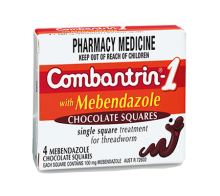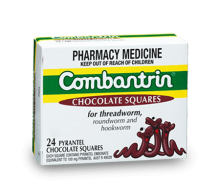As parents, it's important to understand the many different types of worms out there, so that you're fully prepared in the event of an infection. Hookworm is just one worm that can cause these infections, and fortunately, they're considered very rare in Australia and New Zealand. However, in the spirit of being prepared, we've put together a factsheet on hookworms to ensure attentive parents have all the information they need in case of an infection. If, based on the information here, you think your child or a member of your family might have a hookworm infection, contact a medical professional immediately.
What are hookworms?
Hookworm is an intestinal parasite that tends to be found in areas with high population density and poor sanitation – and thus rare in Australia and New Zealand. There are two types of hookworm which can cause infection in humans:
- Ancylostoma duodenale (A. duodenale) – these are largely found in southern Europe, northern Africa, northern Asia and some parts of South America.
- Necator americanus – these parasites were once found in the south eastern US sometime in the early 20th century. 1
Only one of these - Ancylostoma duodenale (A. duodenale) - is considered relevant in Australia and New Zealand.
If untreated, they can live for several years1 inside their host and cause a range of symptoms – some simply unpleasant, some a lot more serious if left untreated.
How do you contract hookworm?
You can catch them by coming into contact with soil that's contaminated with them. In many of the countries where it is prevalent, it's common to walk around with bare feet, which means many people contract them through their feet. Many children also play or work in the dirt, which also allows the hookworm to enter the body through their hands. The way that it is contracted means it can't be passed from person to person, and can only be caught through contact with the larvae in the soil.
What are the symptoms of a hookworm infection?
Hookworm infections are most commonly asymptomatic, but when symptoms do occur, they can include a rash, abdominal pain, diarrhoea, and in severe cases, an iron deficiency2.
Treating hookworm infections
COMBANTRIN® is effective against 3 types of worms including hookworm. The active ingredient in the product – Pyrantel Embonate - paralyses the worms within the body and causes them to be passed out in the faeces. However, COMBANTRIN® will not kill off any eggs or immature worms in the body, nor will it prevent any future infections. Remember to follow up the initial dose with another around two to four weeks later if symptoms persist – this will rid the body of any eggs which may have hatched and matured into adults in that time frame. Hookworm infections are very rare in Australia and New Zealand, but if you suspect your child may have contracted one, it is advisable to seek medical attention for further treatment and advice.





